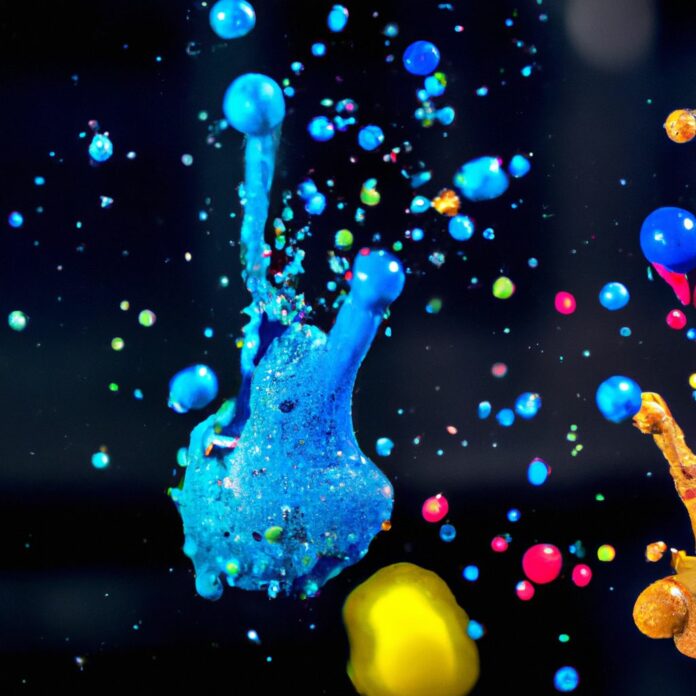Paintball is a thrilling and popular sport that involves shooting paint-filled capsules at opponents. The quality and performance of paintball games depend greatly on the paintball paint used.
Understanding how long paintball paint lasts is crucial for players to ensure optimal gameplay and effectiveness. Here is an overview of paintball paint and its longevity.
Paintball paint is a specialized type of paint designed for use in paintball markers. It is a non-toxic, water-soluble, and biodegradable substance. The paint is contained within gelatin capsules that break upon impact, leaving a visible mark.
There are different types and compositions of paintball paint, each with slight variations in performance, thickness, and shell hardness.
The longevity of paintball paint depends on various factors, including the shelf life of unopened paint and the conditions in which it is stored.
Unopened paintball paint typically has a shelf life of about 6 to 12 months. This shelf life can vary based on the brand and quality of paint. It is essential to check the manufacturer’s recommendations for specific storage times.
Several factors can affect the longevity of paintball paint, including exposure to temperature fluctuations, humidity, and direct sunlight. Paint stored in extreme conditions can deteriorate faster and become less accurate or break prematurely when fired.
Signs that paintball paint may have expired include changes in consistency, such as becoming thicker or clumpy, and changes in color or smell. If the paint has significantly changed in any of these aspects, it is best to err on the side of caution and replace it.
Using expired paintball paint can result in inaccurate shots, increased barrel breaks, and reduced effectiveness during gameplay. It can impact the overall experience and enjoyment of the sport.
Proper storage of paintball paint is essential to maintain its quality and longevity.
The ideal storage conditions for paintball paint include keeping it in a cool, dry place away from direct sunlight and extreme temperatures. Most paint manufacturers recommend storing paint between 50°F and 70°F (10°C – 21°C) to maintain its integrity.
To prolong the life of paintball paint, it is essential to store it in an airtight container and avoid exposing it to moisture or extreme temperature changes. gently agitating the paint containers periodically can help prevent settling.
By understanding the lifespan of paintball paint, recognizing signs of expiration, and taking appropriate storage measures, players can ensure that their paintball games are enjoyable, accurate, and filled with vibrant splatters.
What Is Paintball Paint?

Paintball paint is the lifeblood of any intense paintball battle. In this section, we’ll dive into the world of paintball paint and explore its composition and different types.
Discover the secrets behind its vibrant colors, durability, and the perfect consistency for those satisfying splatters.
Whether you’re a die-hard paintball enthusiast or a curious newcomer, join us on this journey to uncover the fascinating world of paintball paint and how it enhances the adrenaline-pumping experience on the battlefield.
Get ready to unleash your inner warrior!
Composition of Paintball Paint
The composition of paintball paint can vary depending on the brand and type.
Below is a table that provides an overview of the common components found in paintball paint:
| Component | Description |
| Gelatin | The outer shell of the paintball, which gives it its shape and helps it break upon impact. |
| Polyethylene Glycol (PEG) | A water-soluble liquid that acts as a binder, holding the paintball together. |
| Colorants | Pigments or dyes that give the paintball its color. |
| Fillers | Substances added to increase the volume of the paintball without significantly affecting its weight. Examples include cornstarch or talc. |
| Thickening Agents | Substances used to adjust the viscosity of the paintball fill, ensuring it stays inside the shell until impact. |
It is important to note that the exact composition of paintball paint can vary between manufacturers, and some brands may have additional ingredients for specific purposes such as enhanced visibility or increased accuracy.
When choosing paintball paint, it is essential to consider the quality and reliability of the brand, as well as any specific requirements or preferences for performance.
Always follow safety guidelines and use paintball paint responsibly to ensure a safe and enjoyable experience.
Types of Paintball Paint
When it comes to paintball, there are four main types of paintball paint available: Field Grade, Tournament Grade, Training Grade, and Specialty Grade. Each type has its own unique characteristics and is suited for different gameplay scenarios.
The Field Grade paint is designed specifically for outdoor fields and is usually more affordable. It has a thicker shell, which makes it less likely to break upon impact. This type of paint is ideal for long-distance shots and is commonly used in recreational play on outdoor fields.
Tournament Grade paint, on the other hand, is of higher quality and consistency. It has a thinner shell and a brighter fill, which provides better accuracy and is easier to clean. This type of paint is commonly used in competitive tournaments and is well-suited for speedball.
If you are looking for paint for practice sessions and drills, the Training Grade paint is the way to go. It is usually more affordable and has a thicker shell to withstand rough handling. However, it may not have as vibrant colors as other types of paintball paint.
For those who want to add a fun and unique element to gameplay, Specialty Grade paint is the perfect choice. This type of paint includes options like glow-in-the-dark or marbleized paint, which can help players track their shots or add visual flair. Specialty Grade paint is often used in special events and themed games.
When choosing the right paintball paint for your needs, it’s important to consider the type of gameplay, your budget, and your personal preferences.
Each type of paint offers its own advantages and disadvantages, so take the time to find the one that suits your playing style and requirements.
How Long Does Paintball Paint Last?
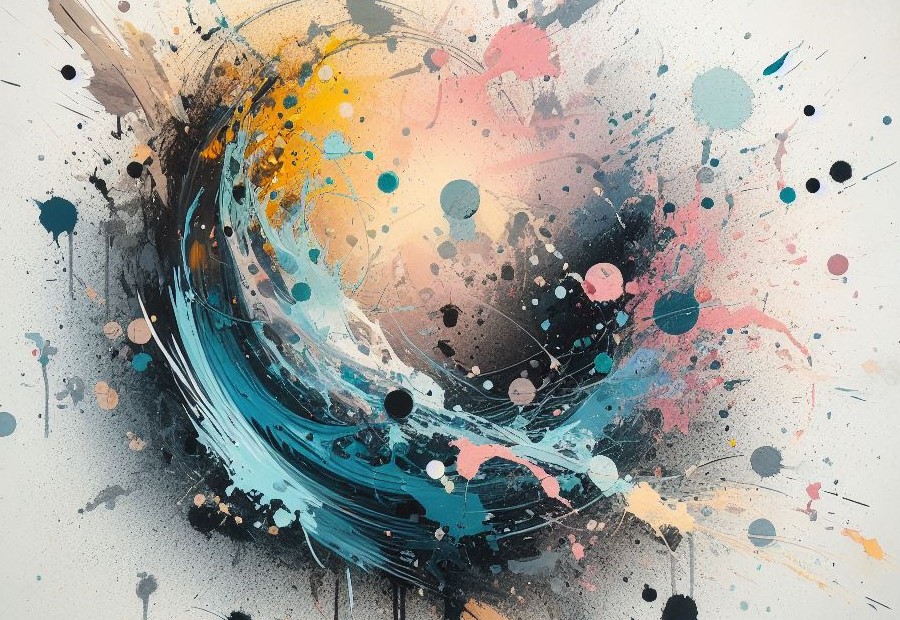
Discover the fascinating lifespan of paintball paint and what affects its longevity. From the shelf life of unopened paintball paint to the various factors that can impact its durability, we’ll dive into the realm of paintball ammunition.
Uncover surprising facts, statistics, and events that shed light on the question of how long paintball paint truly lasts.
Get ready to explore the thrilling world of paintball ammunition and gain insights into the lifespan of these colorful projectiles.
Shelf Life of Unopened Paintball Paint
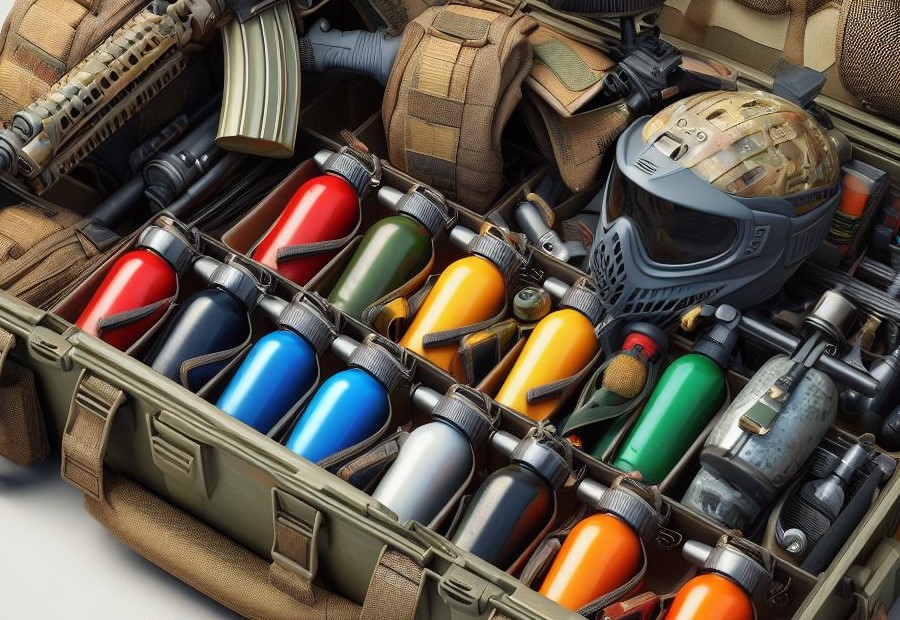
The shelf life of unopened paintball paint can vary depending on several factors. It’s important to know the shelf life of unopened paintball paint to ensure optimal performance during your paintball games.
Factors Affecting the Longevity of Paintball Paint
When it comes to the longevity of paintball paint, several key elements can have an impact:
| 1. Storage Temperature | The temperature at which paintball paint is stored plays a significant role in determining how long it will last. For optimal lifespan, it is recommended to store paintball paint in temperatures ranging from 50-70 degrees Fahrenheit (10-21 degrees Celsius). |
| 2. Humidity Levels | Humidity levels can affect the quality of paintball paint. High humidity can cause the paint to become swollen or sticky, reducing its lifespan. To prolong the paint’s lifespan, it is best to store paintballs in a dry environment. |
| 3. Exposure to Light | Exposing paintball paint to direct sunlight or artificial light for extended periods can have negative effects on the pigments and the gelatin shell of the paintballs. To extend their shelf life, it is advisable to store paintball paint in a dark or opaque container. |
| 4. Quality of Sealing | The quality of the seal on paintball containers is crucial for preventing air and moisture from entering. Well-sealed containers contribute to maintaining the integrity and longevity of paintball paint. |
| 5. Brand and Manufacturing Process | The longevity of paintball paint can also be influenced by the quality standards and manufacturing processes of different paintball brands. Some brands may incorporate specific additives or use higher quality ingredients, resulting in paintballs that last longer. |
To ensure the longevity of your paintball paint, it is advisable to store it in a cool, dry place away from direct light. Additionally, always check the seal on the containers before purchasing and avoid exposing the paintballs to extreme temperatures or humidity.
By considering these factors, you can maximize the lifespan and quality of your paintball paint.
Can Paintball Paint Expire?
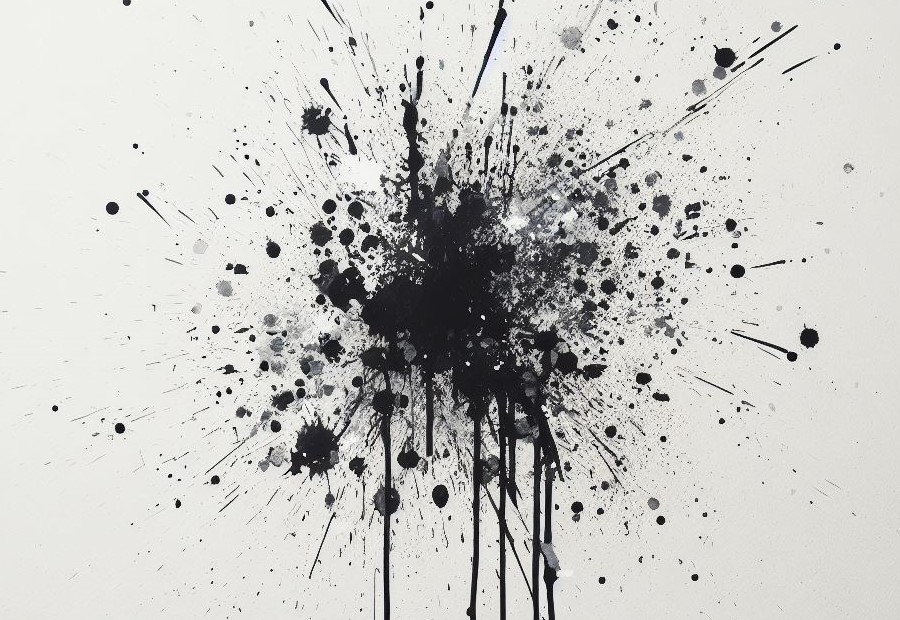
Paintball paint may not last forever, and you might be wondering if it can actually expire. In this section, we’ll uncover the truth about paintball paint expiration. We’ll explore the signs that indicate paintball paint has gone bad and the potential effects of using expired paint.
So, let’s dive in and find out how long paintball paint can truly last before it loses its punch on the field.
Signs of Expired Paintball Paint
Signs of expired paintball paint can be easily identified if you observe the following:
- Lumps or clumps: When paintball paint expires, it can start to form lumps or clumps. These can clog your paintball markers and affect their performance.
- Change in color: If you notice a significant color change in the paintball paint, it could indicate that it has expired. The paint may become darker, lighter, or develop a strange hue.
- Separation of components: Expired paintball paint may separate into different layers or show signs of settling. This can make it difficult to achieve a consistent and accurate shot.
- Strange odor: A strong or unpleasant smell coming from the paintball paint may indicate that it has expired. Fresh paintball paint should have a neutral or slightly sweet smell.
- Inconsistent breakage: Expired paintball paint may have inconsistent breakage upon impact. It may not burst as easily or leave visible marks on the target, affecting the overall gameplay.
It’s important to properly inspect your paintball paint before each game to ensure its effectiveness. Using expired paintball paint can lead to issues with accuracy, performance, and potentially damage your equipment.
Despite the growing popularity of paintball today, did you know that it originated in the 1980s as a recreational activity for farmers and forestry workers? What started as a way to mark trees or livestock quickly evolved into the thrilling sport we know today.
Now, paintball attracts players of all ages and skill levels, offering an exciting and strategic competition.
Effects of Using Expired Paintball Paint
Using expired paintball paint can have a negative impact on accuracy. The paint may become thicker or clumpy over time, which can make it challenging to achieve a consistent and accurate trajectory.
When paintball paint expires, it may not break properly upon impact, resulting in bounce-offs rather than clear hits. This can be frustrating during a game and may lead to disputes among players.
Expired paintball paint that has thickened or dried out can clog the gun barrel and feeding system, causing malfunctions and jams during gameplay. This can greatly affect the player’s performance and overall experience.
Cleaning equipment and clothing becomes more difficult when using expired paintball paint. The dried paint can leave stubborn stains and may require extra effort to remove, potentially causing damage to gear.
Over time, the degradation of paintball paint can lead to unpredictable flight patterns. This can make it harder for players to anticipate and adjust their shots, affecting their game strategy and overall performance.
As paintball paint ages, its bright colors may fade, making it harder for players to track their shots and see where they hit targets or opponents.
How to Properly Store Paintball Paint?
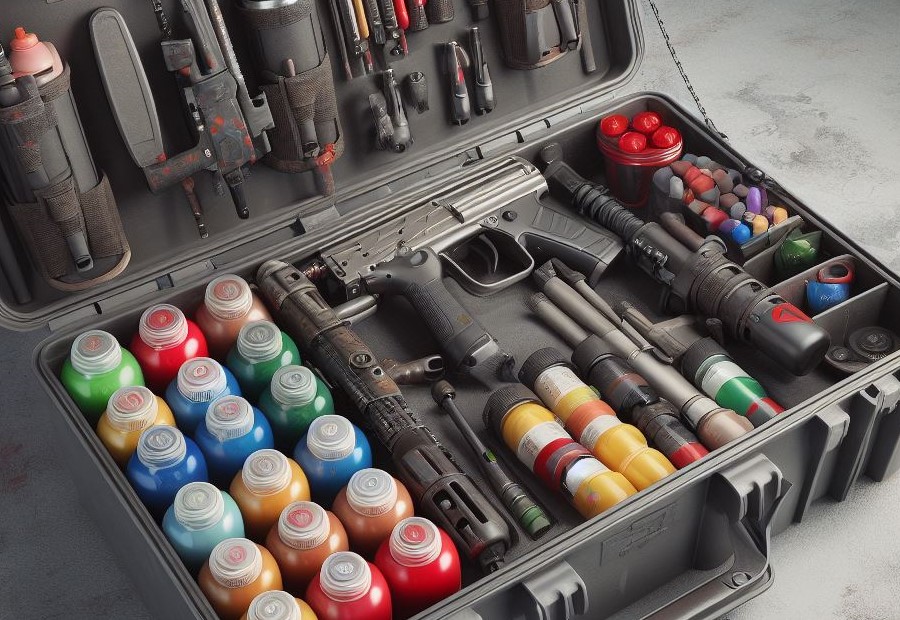
Properly storing paintball paint is crucial to maintaining its quality and effectiveness. In this section, we’ll uncover the secrets of ideal storage conditions and share invaluable tips for storage and maintenance.
Whether you’re a beginner or a seasoned paintball enthusiast, these insights will ensure that your paintball paint remains in top-notch condition, ready to deliver those satisfying splatters on the field.
So, let’s dive in and explore the best practices for storing your paintball ammunition!
Tips for Storage and Maintenance
When it comes to storage and maintenance, there are a few important tips for ensuring the longevity and quality of paintball paint:
- Keep paintball paint in a cool, dry place: It is crucial to store paintball paint in a climate-controlled environment to prevent deterioration. Humidity and extreme temperatures can negatively affect paint quality.
- Avoid exposure to direct sunlight: Sunlight can cause paint to heat up and expand, potentially leading to leaks or ruptures in packaging.
- Store paintball paint upright: Storing paint cans or pods in an upright position helps prevent settling and ensures that paint remains well-mixed and ready to use.
- Check for leaks or damages: Before using or storing paint, inspect packaging for any leaks, damages, or signs of deterioration. Use only intact and sealed containers to maintain paint quality.
- Rotate your stock: If you have multiple batches or containers of paintball paint, make sure to use the oldest ones first. This practice helps prevent paint from expiring and ensures that you are using the freshest paint available.
By following these tips for storage and maintenance, you can prolong the lifespan and maintain the quality of your paintball paint, ensuring optimal performance on the field.
A Brief Overview:
Paintball, a recreational activity enjoyed by millions around the world, was first developed in the early 1980s. The game originally used paint-filled gelatin capsules filled with oil-based paint.
Over the years, advancements in technology and equipment have improved the sport, including the development of water-based paintball paint. This new type of paint offers better visibility, easier clean-up, and reduced impact on the environment.
Today, paintball is not only a popular recreational activity but also a competitive sport with leagues and tournaments worldwide.
With proper storage and maintenance of paintball paint, players can continue to enjoy this fast-paced and thrilling game for years to come.
Frequently Asked Questions
How long does paintball paint last?
Paintball paint has a shelf life of three to eight months, depending on various factors such as storage conditions and the type of paint used.
What are the factors that affect the lifespan of paintball paint?
The lifespan of paintball paint can be affected by factors such as humidity, temperature, sunlight exposure, and the condition of the paintballs.
How does hot weather affect the lifespan of paintball paint?
In hot weather, paintball paint can be affected by heat and humidity, causing the paint to become soft, dimpled, or form oblong shapes. It is best to store paintballs in a cool, dry place during hot weather to maintain their quality.
Does the date of manufacture impact the expiration of paintball paint?
Yes, the date of manufacture is an important factor in determining the expiration of paintball paint. Paintballs typically have a shelf life of three to six months from the date of manufacture.
How can I properly store paintball paint in optimal conditions?
To store paintball paint in optimal conditions, it is recommended to keep them in an airtight container or zip-lock plastic bag in a cool, dry place away from direct sunlight and moisture. Additionally, rotating the paintballs regularly can prevent them from sticking together.
What should I do with expired or damaged paintball paint?
If paintball paint has expired or is damaged, it is best to dispose of them properly. Expired paintballs can be dissolved in water and poured into the yard, as they are made of non-toxic and biodegradable materials.
Using expired or damaged paintballs can affect gameplay, the accuracy of shots, and can even cause damage to paintball guns.

